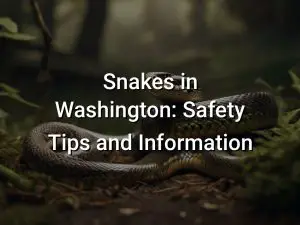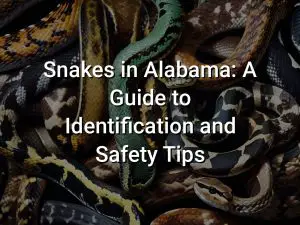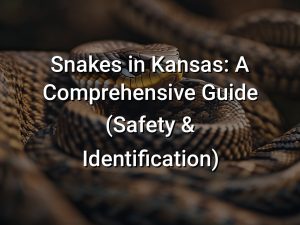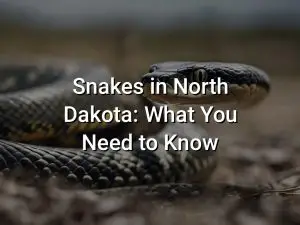Snakes in Arkansas: A Comprehensive Guide (2023)
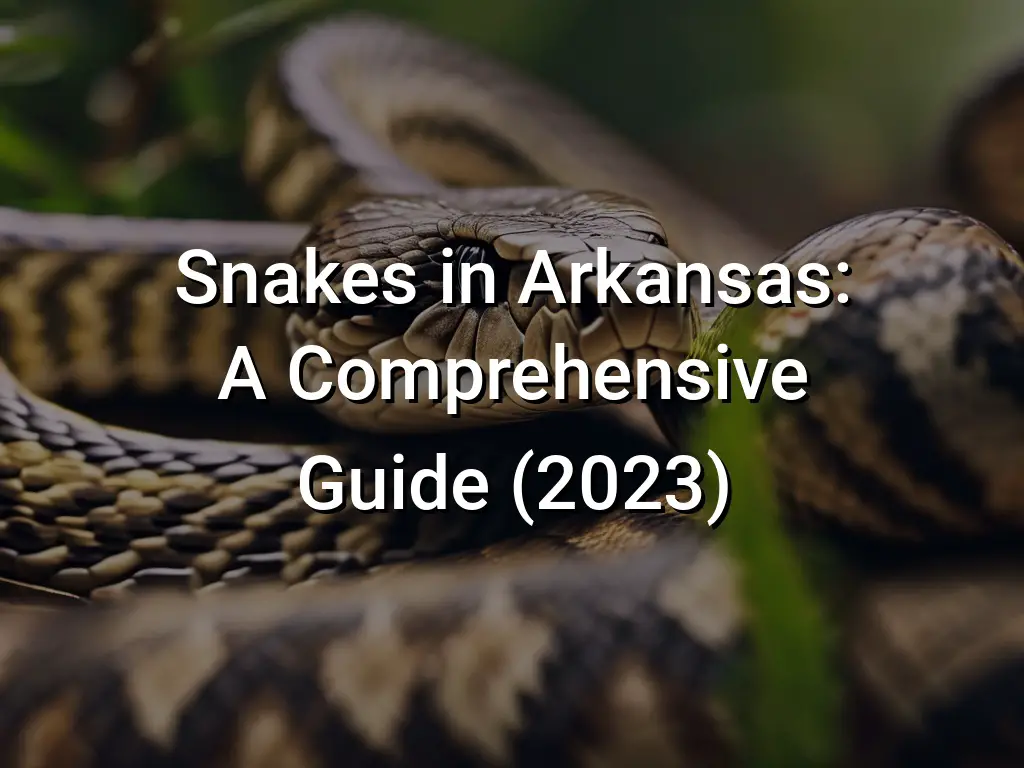
Snakes in Arkansas: a topic that might send a shiver down your spine or pique your curiosity. Whether you find them fascinating or frightening, Arkansas is home to a diverse range of snake species that inhabit its diverse ecosystems. In this comprehensive guide, we’ll take you on a journey through the world of Arkansas snakes, exploring their physical characteristics, venomous and non-venomous species, endangered snake species, habitats and distribution, behavior and reproduction, snakebite prevention and first aid, conservation efforts, and snake identification tips.
Get ready to delve into the fascinating world of snakes in Arkansas as we unravel the secrets of these intriguing creatures. From their unique physical traits to their essential role in the ecosystem, this guide will equip you with knowledge and understanding to appreciate and coexist with these reptiles that call Arkansas home.
Quick Links
Introduction
Welcome to “Snakes in Arkansas: A Comprehensive Guide”! In this article, we will explore the fascinating world of snakes that inhabit the diverse landscapes of Arkansas. From venomous species to non-venomous ones, we will provide you with information about their physical characteristics, habitats, behavior, and more. Whether you’re a snake enthusiast, a hiker, or someone seeking knowledge about these reptiles, this guide will serve as a valuable resource for understanding and appreciating Arkansas’s snake population.
Physical Characteristics of Arkansas Snakes
Arkansas is home to a diverse range of snake species, each with its own unique physical characteristics. Understanding these characteristics can help identify and differentiate between the various snake species found in the state.
One of the most noticeable physical characteristics of snakes is their elongated body shape, which allows for efficient movement on the ground or through trees. They lack limbs and instead have a streamlined body covered in scales that provide protection and aid in locomotion.
Snakes have a wide variety of colors and patterns, which can vary significantly between species. Some snakes in Arkansas have vibrant, eye-catching colors, while others have more muted tones that provide camouflage in their natural habitats. These colors and patterns can serve different purposes, such as attracting mates, communicating warnings, or blending in with their surroundings.
Another distinguishing feature of snakes is their forked tongue, which they use to gather scent particles from their environment. This allows them to detect prey, predators, and potential mates by flicking their tongue in and out of their mouths and “tasting” the air.
Most snake species in Arkansas have multiple rows of teeth, which are used to seize and hold onto prey. Depending on the species, the teeth may be sharp and curved for injecting venom, or they may be small and conical for gripping and swallowing prey whole.
Size also varies among snake species, with some being relatively small, only a few inches long, while others can grow several feet in length. Arkansas is home to both small and large snake species, ranging from harmless garter snakes to larger, venomous species such as copperheads and rattlesnakes.
Understanding the physical characteristics of Arkansas snakes is an essential step in identifying and appreciating the diversity of these fascinating creatures in the state’s natural habitats.
Venomous Snakes in Arkansas
Arkansas is home to several species of venomous snakes. It’s important to be able to identify these species to ensure your safety while exploring the outdoors. Here are some of the venomous snakes you may encounter in Arkansas:
- Copperhead (Agkistrodon contortrix): Copperheads are venomous pit vipers with distinct hourglass markings on their bodies. They are generally found in wooded areas and are known for their camouflage.
- Western Cottonmouth (Agkistrodon piscivorus leucostoma): Cottonmouths, also known as water moccasins, are large venomous snakes that often inhabit wetland areas. They have a dark-colored body and a thick, triangular-shaped head.
- Timber Rattlesnake (Crotalus horridus): Timber rattlesnakes are venomous pit vipers characterized by their rattle at the end of their tails. They can vary in color and pattern, but they typically have dark bands or blotches on a lighter background.
- Pygmy Rattlesnake (Sistrurus miliarius): Pygmy rattlesnakes are small venomous snakes that can be found in a variety of habitats, including forests, swamps, and grasslands. They have a rattle at the end of their tails but are generally less aggressive than other rattlesnake species.
If you encounter any of these venomous snakes in Arkansas, it’s important to remember to keep your distance and avoid provoking them. If you or someone else is bitten by a venomous snake, seek immediate medical attention and try to identify the snake if possible for proper treatment.
Remember, snakes play an important role in the ecosystem, so it’s best to admire them from a safe distance and respect their natural habitats.
Non-Venomous Snakes in Arkansas
Arkansas is home to a variety of non-venomous snake species, each with its own unique characteristics and adaptations. These snakes play a crucial role in maintaining the ecosystem’s balance by controlling rodent populations and serving as prey for larger predators.
One of the most commonly encountered non-venomous snakes in Arkansas is the Eastern Rat Snake (Pantherophis alleghaniensis). These snakes are large, with adults typically reaching lengths of 4 to 6 feet. They have a black coloration with white or yellow blotches along their bodies, and they are excellent climbers, often found in trees. Eastern Rat Snakes are beneficial to have around as they feed on rodents, birds, and their eggs.
Another non-venomous snake species you may come across in Arkansas is the Gray Rat Snake (Pantherophis spiloides). They have a similar appearance to Eastern Rat Snakes, but their coloring is more gray in tone. Gray Rat Snakes are also skilled climbers and are known to be excellent swimmers. They primarily feed on small mammals, birds, and eggs.
The Brown Snake (Storeria dekayi) is a small non-venomous snake commonly found in Arkansas. They have a light brown or gray color with darker markings on their backs. Brown Snakes are often mistaken for juvenile Copperhead snakes due to their similar coloration, but they are harmless and feed on slugs, earthworms, and small insects.
If you’re lucky, you may spot a Corn Snake (Pantherophis guttatus) in Arkansas. These snakes are known for their vibrant colors, with individuals displaying patterns of red, orange, and brown. They are typically found in grasslands, fields, and forest edges. Corn Snakes are excellent climbers and feed on rodents and small birds.
One non-venomous snake species that is quite unique to Arkansas is the Western Mud Snake (Farancia abacura reinwardti). These snakes are semi-aquatic and are most often found in wetland areas. They have striking black bodies with vibrant red or pink bands. Western Mud Snakes primarily feed on aquatic prey, such as amphibians and small fish.
It’s important to remember that while these snakes are non-venomous, it’s always best to observe them from a safe distance and not attempt to handle them. Respecting their natural habitats and roles in the ecosystem ensures their continued presence in Arkansas.
Endangered Snake Species in Arkansas
Arkansas is home to several snake species that are considered endangered or at risk due to habitat loss, pollution, and other factors. These endangered snake species play a vital role in the ecosystem and their decline is a cause for concern.
1. Eastern Indigo Snake (Drymarchon couperi): The Eastern Indigo Snake is the longest snake native to the United States and is found in southern Arkansas. It is listed as a federally threatened species and is protected under the Endangered Species Act. This snake is non-venomous and preys on small mammals, birds, and other snakes.
2. Gray Rat Snake (Pantherophis spiloides): The Gray Rat Snake, also known as the Black Rat Snake, is found in various parts of Arkansas. It is listed as a species of special concern in the state due to habitat loss and fragmentation. This snake is non-venomous and plays an important role in controlling rodent populations.
3. Ouachita Map Turtle (Graptemys ouachitensis): While not a snake species, the Ouachita Map Turtle is an endangered species found in the rivers and streams of Arkansas. It is named after the Ouachita River and is threatened by habitat degradation, pollution, and the pet trade. This turtle relies on healthy aquatic ecosystems and is an indicator of water quality.
4. Speckled Kingsnake (Lampropeltis holbrooki): The Speckled Kingsnake is a species of special concern in Arkansas due to habitat loss and fragmentation. It is a non-venomous snake that inhabits a variety of habitats, including forests, swamps, and grasslands. The decline of this snake species can disrupt the balance of the ecosystems it inhabits.
It is important to protect these endangered snake species and their habitats to ensure the long-term survival of these unique and valuable creatures. Conservation efforts, such as habitat restoration, public education, and regulations against illegal collection and trade, are crucial for their preservation.
Habitats and Distribution of Arkansas Snakes
Arkansas is home to a wide variety of snake species, each with its own preferred habitat and distribution. Understanding the habitats and distribution of snakes in Arkansas can help us appreciate their ecological role and coexist with them in their natural environments.
Snakes in Arkansas can be found in a range of habitats, including forests, grasslands, wetlands, and even urban areas. They are adaptable creatures that have evolved to thrive in diverse environments.
One common habitat for snakes in Arkansas is the forest. Snakes like the Eastern Rat Snake and the Timber Rattlesnake can be found in wooded areas, where they have access to both trees for climbing and ample prey species, such as rodents and birds.
Grasslands also provide suitable habitats for certain snake species, such as the Western Diamondback Rattlesnake and the Prairie Kingsnake. These snakes take advantage of the open spaces and abundant small mammals found in grasslands.
Wetlands, including swamps, marshes, and riverbanks, are important habitats for many snakes in Arkansas. The Cottonmouth, for example, is commonly found in wetland areas, where it can swim and hunt for fish and amphibians.
Urban areas in Arkansas also support snake populations. Snakes like the Eastern Garter Snake and the Black Rat Snake can often be found in parks, gardens, and other green spaces within cities and towns.
When it comes to the distribution of snakes in Arkansas, certain species have a wider range throughout the state, while others may be more localized. For example, the Copperhead snake is found throughout most of Arkansas, while the Louisiana Pine Snake is confined to a specific region in the southwestern part of the state.
It’s important to note that some snake species in Arkansas are considered endangered or threatened. These include the Speckled Kingsnake and the Louisiana Pine Snake. Efforts are being made to protect their habitats and ensure their continued survival in the wild.
By understanding the different habitats and distribution patterns of snakes in Arkansas, we can better appreciate their ecological importance and coexist with them in their natural environments. Remember, if you encounter a snake in the wild, it’s best to observe it from a safe distance and avoid disturbing or harming it.
Behavior and Reproduction of Arkansas Snakes
Snakes in Arkansas exhibit a wide range of behaviors and reproductive strategies. Understanding their behavior and life cycle can help us coexist with these fascinating creatures.
Snakes are ectothermic, meaning they rely on external sources to regulate their body temperature. As a result, they are most active during warm months when their metabolism is higher. Snakes can be found basking in the sun to absorb heat or seeking shelter in cool, shaded areas to avoid overheating.
Arkansas snakes have various feeding habits depending on their species. Some are carnivorous and primarily eat rodents, lizards, and other small animals. Others are piscivorous and feed on fish, while some specialize in eating amphibians or insects. The feeding behavior of snakes is an essential aspect of maintaining the balance of local ecosystems.
When it comes to reproduction, snakes employ different strategies. Some snakes, such as the Western Cottonmouth and Copperhead, give birth to live young. This reproductive method is known as viviparity. Other snakes, like the Eastern Diamondback Rattlesnake and Timber Rattlesnake, lay eggs. This reproductive method is known as oviparity.
Snakes employ various courtship behaviors before mating. Males may engage in combat or engage in elaborate mating dances to attract a female’s attention. Once a female is receptive, mating occurs, and fertilization takes place internally. The gestation period for live-bearing snakes varies from a few months to over a year, depending on the species. For egg-laying snakes, the female will find a suitable nesting site, lay her eggs, and then leave them to incubate without any parental care.
After hatching or giving birth, the young snakes are relatively independent from their parents. They must fend for themselves and learn to hunt and survive. Juvenile snakes often resemble miniature versions of their parents but may have different coloration or patterns.
It’s important to note that snakes play a vital role in the ecosystem as both predators and prey. They help control populations of rodents and other small animals and are an integral part of the food chain. It’s crucial to respect and understand their behavior to ensure their conservation and our safety.
Snakebite Prevention and First Aid
Snakes are a natural part of the Arkansas ecosystem, and encounters with them can happen, especially when exploring the great outdoors. While most snakes in Arkansas are non-venomous and pose little threat to humans, it is essential to take precautions and understand what to do in case of a snakebite.
Snakebite Prevention:
- Wear appropriate footwear and clothing when hiking or spending time in snake-prone areas.
- Stay on designated trails and avoid tall grasses, brush, and rocky areas where snakes may be hiding.
- Be cautious when climbing over rocks or fallen logs, as snakes often seek shelter in these areas.
- Use a flashlight when walking at night to spot snakes more easily.
- Avoid reaching into crevices or holes without first checking for any snake presence.
- Do not attempt to handle or provoke snakes. Keep a safe distance and observe them from afar.
What to Do If Bitten:
If you or someone else is bitten by a snake in Arkansas, it is crucial to remain calm and take the necessary steps for first aid:
- Move away from the snake to prevent further bites.
- Immediately call emergency services or seek medical attention for professional help.
- While waiting for medical assistance, keep the bitten area below heart level if possible.
- Remove any tight clothing or jewelry near the bite, as swelling may occur.
- Refrain from sucking out venom or using a tourniquet, as these methods are not effective and may worsen the situation.
- Keep the person calm and still to slow the spread of venom.
- Take note of the snake’s appearance, if possible, for identification purposes.
Snakebite First Aid Don’ts:
- Do not attempt to catch or kill the snake for identification purposes. It could lead to another bite.
- Avoid applying ice or cold packs directly to the wound, as it may cause tissue damage.
- Do not use a constrictive bandage or tourniquet, as it may cut off blood flow and cause more harm.
- Refrain from using electric shock, cutting the wound, or applying substances like alcohol or coffee to the bite. These methods are ineffective and may worsen the situation.
Remember, snakebites in Arkansas are relatively rare, and most encounters can be avoided with proper precautions. However, it is essential to be prepared and knowledgeable so that you can respond appropriately in the unlikely event of a snakebite.
Conservation Efforts for Arkansas Snakes
Conservation efforts are crucial for the protection and preservation of Arkansas snakes, especially those that are endangered or threatened. Various organizations, government agencies, and individuals are actively working towards conserving and maintaining the snake populations in the state.
One of the key initiatives is habitat preservation. Many snakes in Arkansas rely on specific habitats for survival, such as forests, wetlands, and prairies. By conserving these habitats and preventing their destruction, it is possible to safeguard the snakes’ natural environment and ensure their continued existence.
Another crucial aspect of snake conservation is public awareness and education. Educating the public about the importance of snakes in the ecosystem, their role in controlling rodent populations, and dispelling common myths and misconceptions helps foster a positive attitude towards snakes. It also encourages people to coexist with them rather than exterminate them.
Several organizations and agencies in Arkansas conduct outreach programs, workshops, and educational events to promote snake conservation. They provide information on snake identification, behavior, and habitat conservation, emphasizing the need to protect these fascinating creatures.
Additionally, efforts are being made to develop and enforce regulations that protect snakes. These regulations include restrictions on snake collection and trade, as well as measures to prevent the illegal killing or capture of snakes.
Research and monitoring efforts play a crucial role in snake conservation. By studying snake populations, their distribution, and habitat requirements, scientists can gain valuable insights into the threats they face and develop effective conservation strategies.
Lastly, collaboration between various stakeholders is essential for successful snake conservation in Arkansas. By working together, government agencies, organizations, researchers, and individuals can pool their resources, expertise, and efforts to maximize the effectiveness of conservation initiatives.
Overall, conservation efforts in Arkansas are vital for protecting the state’s snake species and ensuring their long-term survival. Through habitat preservation, public education, regulations, research, and collaboration, we can contribute to the conservation and preservation of these remarkable creatures.
Snake Identification Tips in Arkansas
Identifying snakes in Arkansas can be challenging, but there are some key features you can look for to help you determine the species. Here are some snake identification tips specific to Arkansas:
- Head shape: Pay attention to the shape of the snake’s head. Venomous snakes in Arkansas, such as the copperhead and the cottonmouth, typically have triangular-shaped heads, while non-venomous snakes usually have more rounded heads.
- Color pattern: Look at the snake’s color pattern. Some venomous snakes, like the coral snake, have vivid and colorful banding, while others, like the timber rattlesnake, have dark and blotchy patterns. Non-venomous snakes may have a variety of color patterns, but they are generally less vibrant.
- Eye shape and pupil: Venomous snakes usually have vertical and elliptical pupils, while non-venomous snakes have round pupils. Observing the shape of the snake’s eyes can provide important clues for identification.
- Body shape and scales: Venomous snakes often have heavier bodies and thicker scales compared to non-venomous snakes. However, this is not always a reliable indicator, as there are exceptions.
- Behavior: Take note of the snake’s behavior. Venomous snakes in Arkansas may display defensive or aggressive behavior, such as loud hissing, rattling of the tail, or striking in a defensive posture. Non-venomous snakes are generally more docile and try to avoid confrontation.
It’s important to remember that snake identification can be challenging, and it is always best to exercise caution when encountering any snake in the wild. If you are unsure of a snake’s identity or if you suspect it is venomous, it is recommended to keep your distance and contact a local wildlife authority for assistance.
Conclusion
Arkansas is home to a diverse range of snake species, both venomous and non-venomous. Understanding the physical characteristics, habitats, and behaviors of these snakes is crucial for staying safe and conserving their populations. It’s important to be informed about snakebite prevention and first aid, as well as the identification tips that can help differentiate between venomous and non-venomous species.
Conservation efforts are also vital for protecting the snake habitats and ensuring their survival. By respecting their habitats and practicing responsible outdoor activities, we can coexist with these incredible creatures. So, whether you encounter a snake in Arkansas or simply appreciate their role in the ecosystem, let’s continue to appreciate and protect these fascinating reptiles.

